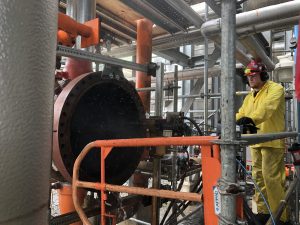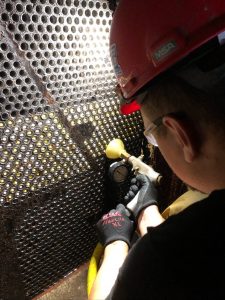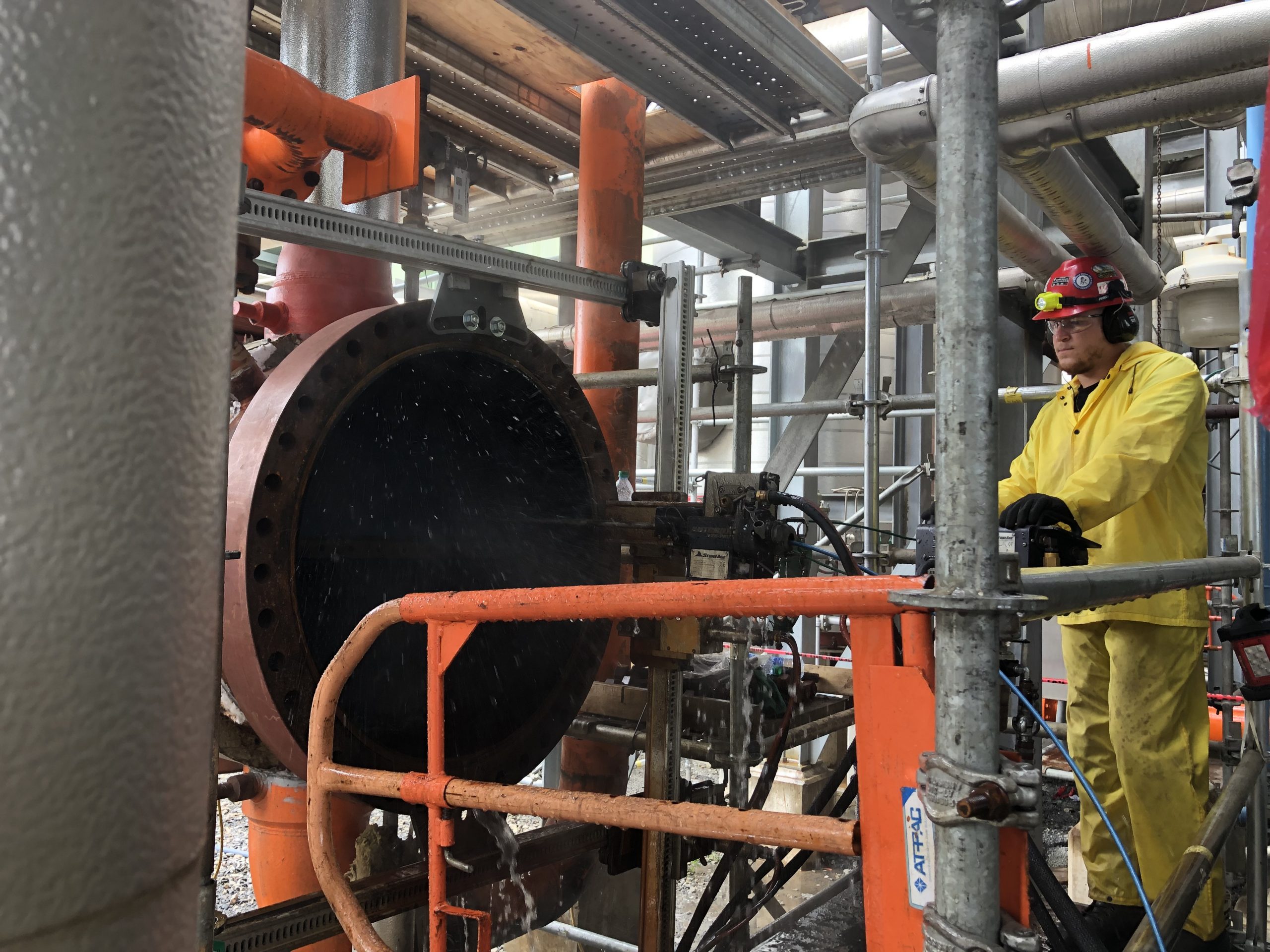Why are heat exchanger cleaning methods important? Clean heat exchanger tubes are core to the functionality of shell and tube heat exchangers. When they become fouled, the result may be a decrease in the entire unit’s efficiency. This affects flow rate, heat transfer, and fluid pressure. You need to clean and maintain them regularly in order to ensure a smooth process flow for your system’s operation.
While the necessity for heat exchanger tube cleaning is an established fact, there are several methods of performing that cleaning.
High-Pressure Water Blasting

The problem with high-pressure water blasting is that it’s slower than other competing processes. The pressure also creates a substantial safety hazard. The speed of the process is slower because lances are pushed down and back the full length of the tube. The action of the lances extends the cleaning time when compared to other cleaning systems. On top of that, operators are faced with dangers that arise from the water blast itself. Additionally, high-pressure water blasting uses larger amounts of water than competing systems the recycling/disposal of this cleaning water adds to the total cost of the project.
Mechanical Tube Cleaning Method
Mechanical tube cleaning uses projectiles to clean tubes rather than water jets. This projectile-based method
The gist of mechanical tube cleaning is that a tube cleaner, which can be made of plastic, metal, or nylon brushes, is fired through the heat exchanger tubing (there are a couple of sources of propulsion, but more on that in a second). While speeding through a tube, the cleaning projectile scrapes and blasts through any fouling or debris inside of it.
The type of cleaner you use depends on the type and hardness of the fouling in your tube. Not only does the mechanical tube cleaning method do a great job at cleaning out debris, but it’s faster and cheaper than more traditional methods. This includes the high-pressure water blasting mentioned above. The main reason for the cost savings is due to the speed at which tubes can be cleaned. Typically, a crew of three to four tube cleaners can clean 450-500 tubes per hour. This rate is much faster than competing methods like high pressure water blasting.
Now let’s get back to the two methods of mechanical tube cleaning. Water powered, or both air and water powered, machines propel the cleaning projectiles. You can read our analysis of which method is preferable, but for now let’s just go over the basics of how each method works.
Water Powered Tube Cleaning Method
This method of mechanical tube cleaning uses a pressurized jet of water to fire the projectile through the tube, cleaning out fouling as it passes. The water pressure is usually between 350 and 450 PSI. This propels the tube cleaner at about 15 feet per second and ensures optimal surface cleaning.
Air and Water Heat Exchanger Cleaning Method
An air and water system is basically using air pressure, between 80 and 120 PSI, to fire the tube cleaner at a minimum of 30 feet per second through the tube. The water component is in the form of flushing the tube during the cleaning process to remove airborne debris, rather than in a propulsion role.
While both high-pressure water blasting and mechanical cleaning are valid techniques for cleaning your heat exchanger’s tubes, the advantages offered by mechanical cleaning make it the preferred method. The use of projectiles in the cleaning process ends up being more cost-efficient and safer overall.
Visit us here to schedule your heat exchanger tube cleaning and maintenance with Projectile Tube Cleaning Inc.

